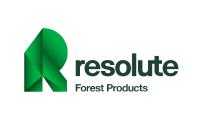The Corporate Sustainability Reporting Directive (CSRD) expanded the Non-Financial Reporting Directive (NFRD) and set out new requirements for sustainability reporting for companies operating in the European Union (EU).
The aim of CSRD is to increase the quality, consistency, and comparability of sustainability reporting across all European Union (EU) companies. For this reason, it requires large companies to commit to collecting and reporting accurate data and demonstrate their dedication to continuously improving sustainability performance.
Among the most significant changes brought by the CSRD is that companies must report their sustainability information in a digital format, using a European Single Electronic Format (ESEF). This new requirement is crucial as it allows investors and other stakeholders to access and compare sustainability information easier than ever before.
Which steps the companies in the EU must follow to successfully apply the Corporate Sustainability Reporting Directive?
- Companies/Organizations should determine if they are subject to the CSRD.
The CSRD applies to large EU companies. Specifically, those that have more than 500 employees and meet at least two of the following criteria: a balance sheet total of more than €20 million, a net turnover of more than €40 million, or a net profit of more than €2 million.
- Understand the CSRD requirements.
Among the most significant requirements are standardized and digital reporting, independent assurance, and non-financial audits. Companies and οrganizations must obtain independent assurance on the accuracy and reliability of their sustainability information and auditors must perform a limited assurance audit on the non-financial statement included in the company’s annual report.
- Align their sustainability reporting strategy with the CSRD principles.
This means that companies and organizations should decide the purpose of their sustainability report, identify the key sustainability issues, develop specific, measurable, and time-bound goals and targets. Moreover, it is important to determine which reporting framework to use (e.g., GRI, TCFD, SASB), and finally review their sustainability report by relevant stakeholders.
- Companies/Organizations should collect and analyse sustainability data.
They need to collect data that are relevant to their business and stakeholders. They should establish data quality controls and identify trends and areas for improvement.
- Sustainability reports should meet the CSRD requirements.
The report should be reviewed and verified by an independent third party to ensure accuracy and transparency.
The Corporate Sustainability Reporting Directive (CSRD) provides a comprehensive framework for sustainability reporting in the EU, with a focus on improving comparability, and accountability of companies’ ESG practices. Now is the opportunity to find areas for improvement, set goals for future sustainability performance and ensure that the company is making progress toward its sustainability goals.
Align your sustainability performance with the latest EU Directive and gain the knowledge you need to monitor and improve your sustainability reporting strategy. Become a Sustainability (ESG) Practitioner by attending the upcoming C-suite ESG training focused on Europe, in May. 22-23 & 25.







